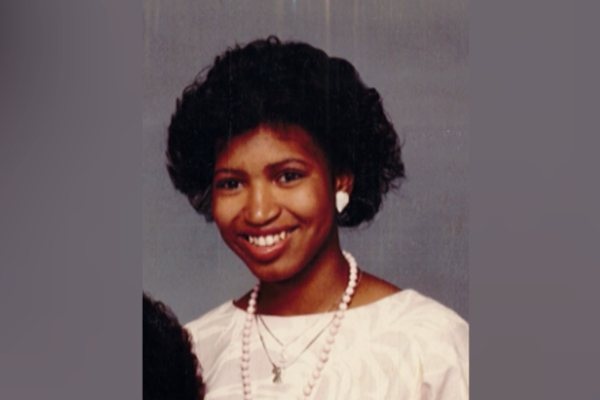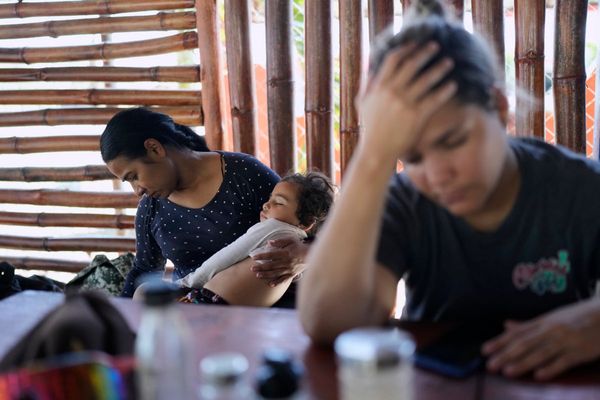
Almost exactly a year ago, Federica Gigante was preparing a lecture and searching the internet for a portrait of the 17th-century Italian nobleman and collector Ludovico Moscardo when an altogether different image caught her eye.
The historian’s gaze soon snagged on a photo of a metal disc with a ring at the top that was kept in the same Verona museum as Moscardo’s picture.
Gigante immediately knew she was looking at an astrolabe – an instrument used to map the stars and tell the time – and an extraordinary one at that. But she would have no idea just how rare and special it was until she travelled to the Fondazione Museo Miniscalchi Erizzo three months later and watched the light stream through one of the museum’s windows to illuminate the instrument’s brass features.
“I saw it was a lot more ancient than they’d realised,” she said. “But at that point, I had no idea it had Hebrew on it. It was only when we took it to a side room and I started to analyse it – by chance I was sitting by a window and the raking light came in – that I started to see these scratches. They were very strange because they weren’t the scratches you’d expect from use. I thought maybe I was just a bit too tired, but more kept coming out.”
Gigante, a research associate at Cambridge University’s history faculty and a former curator of Islamic scientific instruments at Oxford University’s History of Science Museum, had stumbled on a remarkable astrolabe that has passed through Muslim, Jewish and Christian hands in Spain, North Africa and Italy in the 10 centuries since it was constructed in Andalucía.
Its engravings, first in Arabic script, then in Hebrew, tell the story of how knowledge was created, shared and developed by Islamic and Jewish scholars living and working side by side in al-Andalus, the Muslim-ruled area of the Iberian peninsula.
Islamic art is Gigante’s forte, but she knew enough of the Hebrew alphabet to spot that someone had translated the original Arabic names of the astrological signs on the astrolabe into Hebrew. Then she noticed that one of the instrument’s plates was marked Toledo on one side and Córdoba on the other.
The star positions on the instrument matched those on astrolabes made in the 1060s and 1070s, while another of its plates is engraved with latitudes in north Africa, suggesting that whoever was in possession of the device at that time lived in the region or travelled there frequently.
“It’s a bit like adding an app to a smart phone or running an update,” said the historian.
The precise chronology of the Verona astrolabe’s travels is hard to pin down, but Gigante thinks it was made in Andalucía and taken to north Africa – probably Morocco – before it came into the possession of a Jewish owner.
“There’s an added dedication or signature to the object, that reads: ‘For Isaac, the work of Jonah’,” she said. “They’re both Jewish names so it’s very likely that by then, the astrolabe had got into Jewish ownership. But it’s interesting that it’s written in Arabic. Although it was probably in the hands of some Jews, Arabic was the lingua franca and was used by Jews as much as Muslims and Christians.”
One of the sets of Hebrew inscriptions is neatly and deeply carved, she added. “While there’s a set of scratches that look as if I’d taken my keys and done them myself. These are two very different hands and two different phases, which points to how long this object must have been part of a community.”
According to Gigante, the Hebrew additions suggest the astrolabe eventually left Spain or north Africa and began circulating among the Jewish diaspora in Italy, where Hebrew, rather than Arabic, was used.
The last set of engravings, in western numerals, appear to have been done by an Italian or Latin speaker. Gigante believes the astrolabe eventually became part of Moscardo’s collection and then passed, by marriage, to the Miniscalchi family, who founded the Fondazione Museo Miniscalchi Erizzo to preserve the collections in 1990.
Gigante, who has just published an article about the Verona astrolabe in the journal Nuncius, said finding the device had been a perfect meeting between her passion for scientific instruments and her research into how Islamic artefacts, technology and decoration travelled into Europe.
“[The discovery] never happened before and it probably won’t happen again,” she said. “We know that in 11th-century Spain, Jews and Muslims and Christians were working alongside each other, especially in the scientific media, and that many Jewish scientists were sponsored and patronised by Muslim rulers with no concern for their religion.
“It’s not that this instrument tells us this for the first time. All this is known, but what I find extraordinary is that this is a very tangible, physical proof of that history.”







